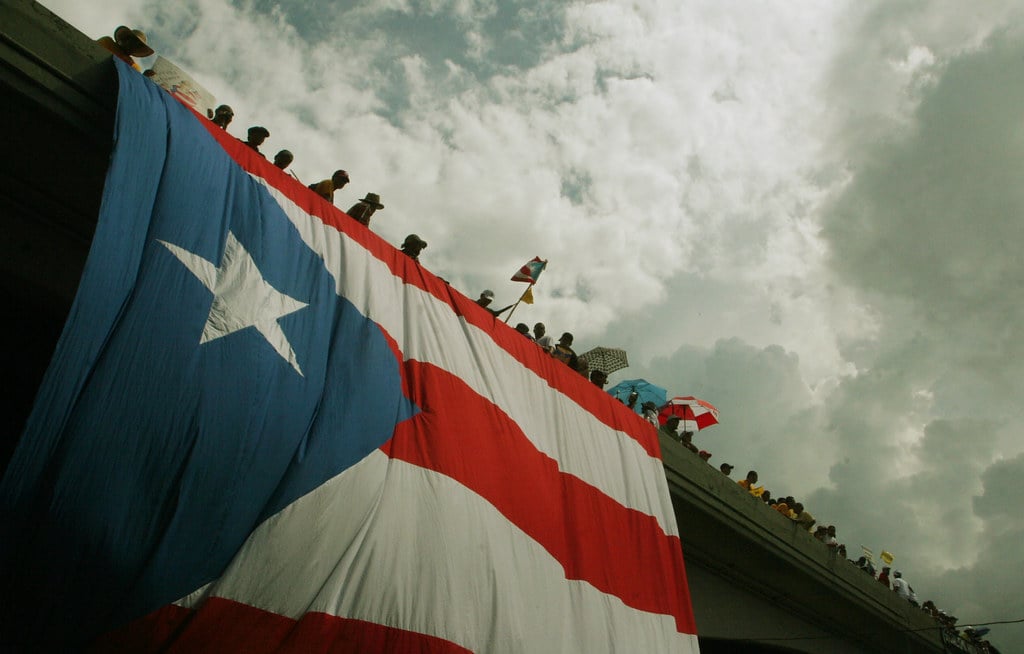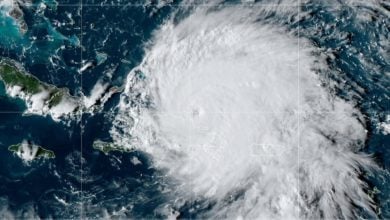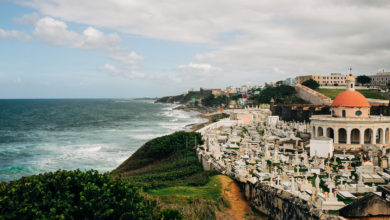On September 23, 1868, in the city of Lares, Puerto Rico, an uprising took place against Spanish colonial domination. That uprising, known as “El Grito de Lares”—the outcry of Lares—opened up a struggle for Puerto Rico’s national liberation, first against Spanish and then against U.S. colonialism. That struggle continues to this day.
El Grito de Lares took place in a world context of bourgeois democratic revolutions against the remnants of feudalism in the dominant European powers. Feudal states like Spain, basing themselves on the wealth generated by large land holdings and colonial exploitation, were forcefully compelled to give way to the growing power of world capitalism.
The Haitian Revolution of 1802-04, coming in the wake of the French Revolution that began in 1789, marked the first Black republic in history. The victory of African slaves who rebelled and broke away from French colonial domination inspired millions around the world.
In 1810, Indigenous people in Mexico under the leadership of Miguel Hidalgo launched a drive to force the Spanish out of that country. Mexico won its independence from Spain in 1824.
Throughout the 1810s and 1820s, Simón Bolívar led an army of Indigenous people and former African slaves in an effort to win the independence of South American colonies from Spain. These successful campaigns shattered the prestige of the Spanish Army. Puerto Rico and Cuba were Spain’s only remaining colonies in Latin America.
In the 1848 revolutionary upheavals that took place in France, Germany and Italy, workers took to the streets against the feudal monarchies. Despite the monarchies’ desperate efforts to hold on to political power, the development of capitalism and the rising of the working classes meant the end of the centuries-long rule of feudal states.
In the United States, the Civil War of 1861-65 led to the overthrow of the slave-owning class in the South. It served as a death blow to the system of chattel slavery everywhere. Due to the vigorous efforts by the African American masses, especially when they fought in organized, armed detachments of the Union Army, the final destruction of the slave system was certain.
In all these struggles, the political demands of freedom and independence were meant to benefit the growing capitalist class, although it was the most oppressed social layers in society that fought the battles to destroy feudalism and chattel slavery.
The Puerto Rican nation
Under Spanish colonialism, the people of Puerto Rico—like the people in the rest of the Caribbean and Latin America—evolved to have the characteristics of self-identity typical of nationhood. The development of nations in the Americas inspired many to seek their freedom. Colonialism defined the class relationships that the newly formed nations would have to Spanish imperial power.
By 1867, there were close to 650,000 people in Puerto Rico. Slightly over half were of white Spanish background; the others were Black slaves, mulattos and mixed-race mestizos. The economy was largely centered on sugar production and the sugar trade, although there was a native capitalist class that gave rise to the Puerto Rican working class.
Spanish colonial rule in Puerto Rico was harsh and allowed for little political participation by the local elites. All policies relating to politics and economy were dictated by the Spanish monarchy. Taxes were heavy. Any expressions for more autonomy—not to mention independence—were brutally put down.
El Grito de Lares took place in the context of increasing resistance to foreign oppression and the socioeconomic developments in the Western Hemisphere.
The Revolutionary Committees
 Ramón Emeterio Betances, father of the Puerto Rican homeland.
|
A central figure in the Grito de Lares uprising was Ramón Emeterio Betances. The son of an African mother and a white father, he was reared in a relatively wealthy and privileged family. However, Betances began to question the causes for the inequalities that existed under a slave-owning colonial system. He was active in the movement to abolish slavery and in the anti-colonial movement. Today, Betances is considered the “father of the Puerto Rican homeland.”
Betances and Segundo Ruiz Belvis founded the Revolutionary Committee of Puerto Rico on Jan. 6, 1868, while they were in exile in the Dominican Republic. Soon, revolutionary committees were formed throughout Puerto Rico to organize for an eventual revolt among all sectors of the population. Under the most secretive measures, organizers reached out to Africans who were toiling as slaves. The punishment for slaves caught in seditious activity was harsh.
Many of the Puerto Rican combatants galvanized by the revolutionary committees were former African slaves who had escaped and were living in hiding. Other freedom fighters were descendants of the Tainos, the original Indigenous people on the island who were living in the mountains and working as day laborers in the towns. The patriotic leadership also included members of the native capitalist class (whites) who were motivated by the idea of freedom to develop economically without the restrictions of a foreign feudal power.
Betances bought rifles, cannons and other weapons in the Dominican Republic. But the Spanish colonial authorities discovered the plans. On his return from the neighboring island nation as his ship entered the harbor of Arecibo, the Spanish Navy surrounded the rebel ship, capturing the cargo and arresting the crew.
News of the ship’s capture reached the revolutionaries in the mountains who were preparing for the rebellion. With Betances in Spanish custody, the leading organizers of the movement decided to call for the rebellion ahead of schedule.
The uprising begins
On the morning of Sept. 23, 1868, hundreds of insurgents on foot and horseback stormed the city of Lares. The army of freedom fighters entered the city, and as the sounds of shouts and gunfire were heard, the day laborers stopped working while African slaves staged an uprising that weakened the defense of the Spanish military garrison.
The principal demands of the revolutionaries were the independence of Puerto Rico and the abolition of chattel slavery. They called for the right to bear arms, the right to determine taxes and freedom of speech and of the press.
After an hour of gun battle, the Spanish military authority was overwhelmed. Government and military officials were forced by the fury of the people to lay down their weapons and surrender. The rebels declared the Republic of Puerto Rico.
The Spanish prisoners were then paraded and displayed for all to view as trophies of war. Certain colonial officials who were guilty of hideous crimes against the people were hung from trees. What was unimaginable at one time—defeating by force an oppressor that presented itself as invincible—was now a reality.
The people rejoiced at the power they now had over their oppressors while celebrating their new freedom. With jubilant emotions the revolutionaries held their weapons in the air as crowds gathered at the town plaza in the center of the city. The Spanish flag, a hated symbol of tyranny, was lowered, stepped on and burned. In its place, the flag of the newly proclaimed Puerto Rican republic was raised on the pole of the municipal building.
It was on this occasion that the people heard for the first time the solemn words of the Puerto Rican struggle for national liberation: “¡Que viva Puerto Rico libre!”—long live a free Puerto Rico!
The revolutionaries’ plans were to secure the fortifications at Lares, then attack and capture the surrounding cities where other groups of revolutionary combatants awaited instructions. Lares was chosen for the initial attack by the patriots because of what was believed to be a strategically advantageous location. Many envisioned the rebellion spreading from the center of the island where Lares is located.
But because the Spaniards were better equipped and more experienced in the techniques of war, the victory at Lares was short-lived. What followed was the suppression of the independence and abolitionist movement throughout Puerto Rico. Many were imprisoned, tortured and murdered. Madrid issued new decrees and sent troop reinforcements to secure its domination over the Puerto Rican people.
But the uprising did lead to some concessions. For example, amid continued turmoil over the question of slavery—something which politically troubled Madrid did not want—the Spanish National Assembly abolished the hated system on March 22, 1873.
The Spanish government granted a limited form of home rule to Puerto Rico in 1897. But one year later, in the course of the Spanish-American war, U.S. troops invaded the island. Puerto Rico remains a U.S. colony to this day.
Before his death on September 16, 1898—a few months after the U.S. invasion—Betances stated, “I do not want to see Puerto Rico under the colonial domination of Spain nor the United States.”
A symbol of struggle
El Grito de Lares is today a celebrated and respected holiday in the U.S.-colonized Caribbean island. Even the U.S.-installed colonial government recognizes El Grito de Lares as an official holiday, closing schools and government offices—while trying to strip the holiday of its revolutionary legacy.
Although the martyrs of Lares did not achieve their quest, they provided the movement today with a sense of the necessity to build a peoples’ movement that can defeat U.S. colonialism. Their fierce struggle against slavery is a continuing model for anti-racist struggle.
Betances and his fellow revolutionaries also provided a living example of the internationalism of oppressed peoples against colonialism. The “Society for the Independence of Cuba and Puerto Rico,” founded in the 1860s by exiled revolutionaries living in New York City, and the close connection and coordination with Lares combatants in the “Grito de Yara” uprising against Spanish rule in Cuba (three weeks after the Grito de Lares) are such examples.
To many in today’s movement for Puerto Rican independence, the experience of Lares underscored that the national salvation and liberation of the people can be achieved only with complete political independence and absolute freedom from foreign interference.
Today, Puerto Rico has a developed and increasingly working class population. But it is still under the complete military and political domination of U.S. imperialism. The continued struggle for an independent state—the only way to guarantee the right to self-determination to a people who have endured five centuries of colonial oppression—today is part and parcel of the struggle against capitalist exploitation.
¡Que viva Puerto Rico libre!





